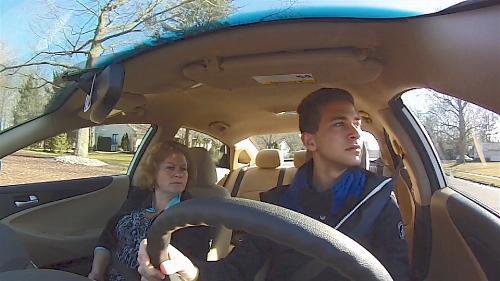Report Highlights Programs With Potential to Increase Teen Seat Belt Use
 |
WASHINGTON -- July 8, 2014: Buckling up has always been a simple action that dramatically increases a person's chances of surviving a crash, but more than half of teen drivers killed in 2012 failed to use a seat belt. What's more shocking is that this number has increased by six percent over the last three years. And worse, teen passengers killed in fatal crashes use their seat belts even less than fatally injured teen drivers – almost 20 percent less. A report by the Governors Highway Safety Association (GHSA) and The Allstate Foundation is giving states and localities tools to combat these trends by highlighting programs across the country that can serve as models to increase teen seat belt use rates.
The report, Getting It to Click: Connecting Teens and Seat Belts, examines the elements of effective teen seat belt programs, showcases promising programs currently implemented in 12 states, and recommendations to accelerate the success of programs motivating teens to buckle up.
"Crashes are already the leading cause of death for teens, and it is particularly disturbing to see the percentage of unbelted teen drivers and passengers in fatalities continue to rise," said GHSA Executive Director Jonathan Adkins, who oversaw the development of this latest report. "It is imperative that we find out what works to make teens understand that using a seat belt may save their life and find ways to convince them to buckle up every time they get in the car."
"Developing innovative, engaging approaches to teen safe driving reduces injuries and ultimately helps save lives," said Steve Sorenson, executive vice president at Allstate. "We hope that highlighting effective programs already underway in states and cities across the country will help expand their reach and encourage everyone in the car to buckle up on every trip."
Programs and initiatives covered in the report were identified through a survey of State Highway Safety Offices (SHSOs) conducted by GHSA in January 2014. After reviewing survey responses, an expert panel identified a number of states with strong teen seat belt-related programs that had the potential for replication by other states. These states are: Delaware, Florida, Iowa, Kansas, Massachusetts, Missouri, Montana, New York, North Dakota, Pennsylvania, Texas and Wisconsin.
Expert panel members identified seven elements that effective teen seat belt programs had in common. These include:
Laws and their enforcement; Peer-to-peer efforts; Parental participation; Community involvement; Incorporation of social media; Provision of incentives; and Resources that would be useful to diverse audiences. Programs detailed in the report all had one or more of these seven elements at their core, and the most successful used a multifaceted approach. Nearly every state has implemented campaigns that address teen road safety, and many have specific efforts that target seat belt use in particular. However, no single approach has solved the challenge of improving teen compliance with seat belt laws. Instead, research shows that combining approaches improves the likelihood of affecting teen behavior.
The state program survey and summary report were created and written by Karen Sprattler, Principal, Sprattler Group. An expert panel contributed to the report. Panel members included Kathy Bernstein Harris, National Safety Council; Anita Boles, NOYS (National Organizations for Youth Safety); Hilda Crespo, Aspira; Chuck DeWeese, New York Governor's Traffic Safety Committee; Sandy Sinclair, National Highway Traffic Safety Administration (NHTSA); Allan Williams, researcher; GHSA's Adkins; and Laura Glaza, The Allstate Foundation.
GHSA will hold a webinar on the report on July 16 at 3:00 p.m. EDT. Register at Meeting Registration.


